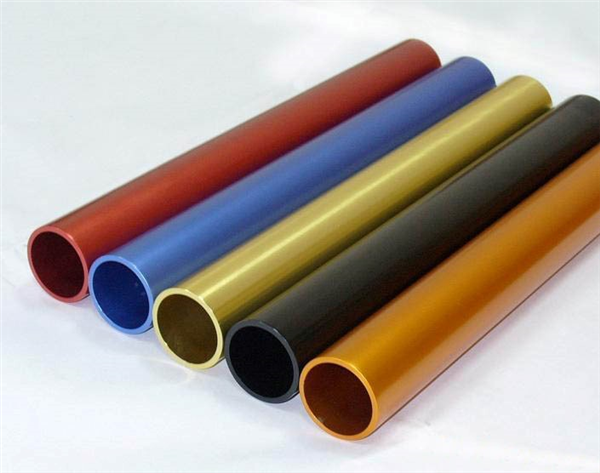©Copyright ©2020 LINKEDALU METAL GROUP CO.,LTD.Technical support:Guangzhou Jumi Network
The surface of aluminum oxide film is composed of porous layer whose area is bigger than the surface with high chemical activity. With this feature, a variety of dyeing treatments can be carried out on the surface of the anodic oxide film. In addition to improving the decorative and corrosion resistance of thealuminum profiles, the dyeing treatment can strengthen the surface of the aluminum profiles with various functions.

Three general dyeing methods can be used in anodic oxide film:
The first category: chemical dipping method
Interior decorations and handicrafts are generally chemically impregnated.
The second category: electrolytic dyeing method
The electrolytic dyeing method is generally used in building aluminum windows and doors profiles.
The third category: the overall dyeing method
The overall dyeing method has been used in the early time, but because of the limited color, the cost is relatively high. At present, it is not used at home and abroad at large.
Here, regarding the dyeing process of aluminum surface, we set aluminum anodic oxidation as an example to introduce you how to solve the chromatic aberration of the anodic oxidation.
1. Pretreatment
Degreasing →alkaline washing →pickling →polishing
Pretreatment includes degreasing, caustic washing, polishing, etc., and the purpose is to make its surface smooth and shiny, and remove the surface impurities, making it easier to oxidation and dyeing.
Degreasing is to take the advantage of degreasing agent in infiltration, separation, emulsification, saponification to removal oil from the metal shell surface. The oil removal is a preparation for the later process, such as alkali washing, oxidation and so on.
Alkali washing is through the saponification of the protopine (NaOH) to take off the excess oil and remove the natural metal oxide film, burrs, and impurities of the metal case. The protopine reacts with machining aluminum parts to remove the surface dirt and the natural oxide film. The purpose is not only to activate the surface, but also to remove the extrusion stripes to achieve different reflective surface.
Pickling is to remove the stained ash on the surface after the alkali washing to get a clean surface. At the same time, it can neutralize the residual alkaline solution by chemical reaction with the aluminum surface.
Polishing includes two types, electrolytic polishing and chemical polishing. Electrolytic polishing is to take the advantage of current to enact the electrochemical reaction of aluminum alloy, so that the uneven parts of aluminum surface can present a smooth mirror effect by chemical reaction. Electrolytic polished machining aluminum parts can still maintain most of the luster after subsequent anodizing treatments. The higher the purity of the aluminum sheet is, the higher the reflectance is. The chemical polishing is through the chemical ion reaction between aluminum and chemical polishing solution, to selectively dissolute of uneven parts of the aluminum surface to eliminate the polishing scratch and etch leveling.
2. Anodized oxidation
Anodic oxidation refers to process that the oxidation occurring in the anode with the help of external current to form a layer oxide film.
3. Post-processing
Washing →dyeing →sealing →drying
After the anodized oxidation, the sulfuric acid solution remains in the membrane pores of the oxide film, so the aluminum profile must be thoroughly cleaned before dyeing. To avoid mixing with impurity ions, especially phosphate ions, fluoride ions, etc., before getting into the stain tank, the profiles should be cleaned with pure water, and the water quality needs to be monitored during the process.
Dyeing is based on the chemical impregnation method, usually considered to be both physical adsorption and also complex reaction between the organic dye functional groups and alumina.
Sealing treatment is an indispensable part of anodic oxidation. After oxidative dyeing, only the sealing treatment can ensure the original color of the dyeing film. Sealing process contains steam sealing, hot water sealing, and mild temperature sealing, and some dyes can also choose cold sealing. The surface of the oxide film is porous into which the dye and the crystal can be adsorbed water. Due to the strong absorbability, if it is not treated in time, it may be contaminated with impurities. So, the filling treatment needs to be carried out in time to improve the porosity membrane strength. The closed treatment includes many methods, such as boiling water, high pressure steam, impregnated metal salt method and organic matter filling (oil, synthetic resin) and so on.
contact us


LINKEDALU METAL GROUP CO.,LTD.
We provide customers with quality products and provide high-quality services.
